First published in the U.S. in 1886 as a family magazine, Cosmopolitan is now an international magazine for women. It has come to be known for its articles on relationships, sex and fashion. For this reason, Cosmopolitan holds a controversial position on many checkouts stands in grocery stores and other retailers across the world.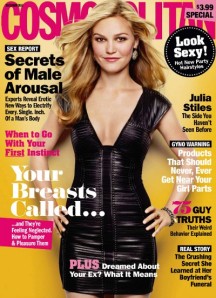
Advertisements throughout Cosmopolitan have been known to focus on the exploitation of women. Increasingly unethical standards for the appearance of the female body are tied to almost all the advertisements between the covers. Sex appeal is portrayed as the ultimate priority and success for a woman. I find it deplorable that in a magazine oriented for females, such advertisements are consistent throughout. Why do we, as women, allow ourselves to judge each other on such characteristics that are so insignificant in the scope of what the female gender encompasses.
It was at this point that I began looking for advertisements that don’t associate females with a value, as a sex symbol, or dismember body parts for the accomplishment of lust or desire. I looked for ads that promoted a product through the use of conservative, natural and real-life characters, settings and scenarios. I also paid attention to how a consumer may comprehend an ad. Myth analysis is a way in which one can understand an ad in observance with how the ad works at a cultural level. That means looking at the ad to see how it defines people, social norms, and further our world. The following is a summary of my findings for five different ads in the December 2010 issue of Cosmopolitan.
The first ad I came across was one about a birth control pill, Natazia. The ad concentrates on a girl, probably in her late twenty’s laying on a bed made with a crisp, wh ite comforter, completely clothed, and wearing natural makeup. The scenery behind her appears blurred, although you can make out a scene of nature with trees. The ad is simple, it reads, “ You know the thread count of your sheets. But do you know what’s in your birth control pill?”
ite comforter, completely clothed, and wearing natural makeup. The scenery behind her appears blurred, although you can make out a scene of nature with trees. The ad is simple, it reads, “ You know the thread count of your sheets. But do you know what’s in your birth control pill?”
One may come to the conclusion that birth control is a mature topic. Conservative, simple scenery and models contrasting flashy scenes and models that are abundant in today’s ads, makes the ad seem serious and sophisticated, qualities that a sexually active woman would possess.
The next ad that I found that was able to sell a product without any obscene sex appeal or flashy backdrops was one about Abilify, a prescription medication that helps control the symptoms of manic and mixed episodes of Bipolar 1 Disorder in adults. This time the use of a male figure walking along the beach clothed in jeans and a plain white T-shirt sells the product. The sky shows a black cloud behind the guy and makes it seem as though it has passed and now blue skies are ahead. Much like to say that by taking this medication the darkness in your life, the symptoms of your disorder are relieved and to imply that a clear future is ahead. Consumers may also see the ad as a story that tells the tale of the resources that mental health diagnosed individuals have so keep “the darkness” out of their future.
An ad for Pert Plus, a 2 in 1 shampoo and conditioner, includes a conservatively dressed model family with ordinary hair color. The ad appears to be saying that this one brand can be used collectively and will have the whole family’s hair looking great. Mom, Dad, br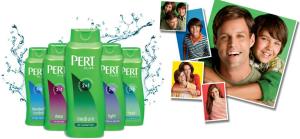 other and sister can all transform hair into looking great, when using the quick and easy Pert Plus.
other and sister can all transform hair into looking great, when using the quick and easy Pert Plus.
I understood this ad to imply the way of life we live. A 2-in-1 product offers the solution to the need for efficiency, calculability and control in our life. The whole family can use it, creating one stop shopping, it combines shampoo and conditioner, which cuts down on shower time—it simplifies life.
Fourthly I found an ad that was promoting platinum settings for James Allen engagement rings. The couple that was shown in the ad was clearly in love. Pictures showed affection and physical contact but both were dressed in neutral colors looking naturally beautiful in beach settings.
This ad defines engagement to be luxurious, worry free and all about love. But do most newly engaged couples spend their free time on beaches watching the sun reflect off the engagement ring? Is that what newly engaged couples are suppose to do? It doesn’t matter, once a long-term girlfrie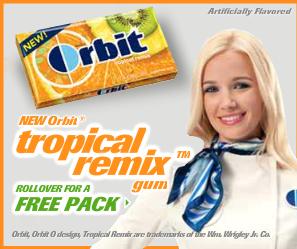 nd sees this ad, that’s what she wants.
nd sees this ad, that’s what she wants.
The last ad I came across was one for a new, tropical remix flavor of Orbit gum. The scene showed tropical fruits that implied what the flavor will taste like, pineapple, oranges and kiwi. There was a female model dressed in an Orbit gum white lab coat with a white-toothed smile.
This ad defines people to be obsessed with outward appearance, in this case fresh breathe and white teeth. It also implies that it is normal to think of a tropical flavor as refreshing just as many people think of a tropical picture to relieve stress.
Advertisements mean a lot more than we may realize when flipping through a magazine. I often times don’t stop to look at the ads, but the split second it takes to turn the page, a consumer feels an emotion toward an ad. Maybe it’s the simplicity of a 2-in-1 product of Pert Plus, the refreshing tropical flavor of Orbit gum, or the relief of mental health problems by Abilifiy, whatever it is, we subconsciously notice the models, scenes and stories that advertisements tell and our culture shows it.
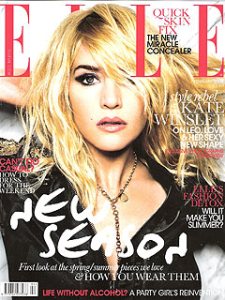
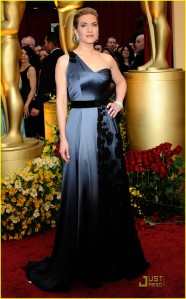
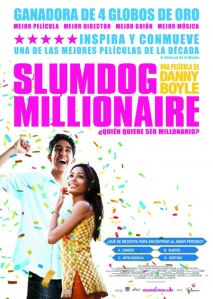







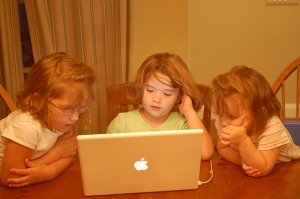





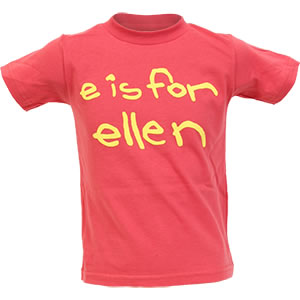 “Backstage Blog”, including video messages from celebrities that are on the show, rehearsal bloopers and more. There is also a “Games” tab that offers online games and downloadable games for adults and kids. Fans can listen to music performances that aired on the show, look through funny picture albums and watch a range of videos. There is even a shopping feature that opens in a new browser window and allows fans to buy The Ellen DeGeneres Show merchandise, ranging from shot glasses to apparel and everything in between.
“Backstage Blog”, including video messages from celebrities that are on the show, rehearsal bloopers and more. There is also a “Games” tab that offers online games and downloadable games for adults and kids. Fans can listen to music performances that aired on the show, look through funny picture albums and watch a range of videos. There is even a shopping feature that opens in a new browser window and allows fans to buy The Ellen DeGeneres Show merchandise, ranging from shot glasses to apparel and everything in between.





